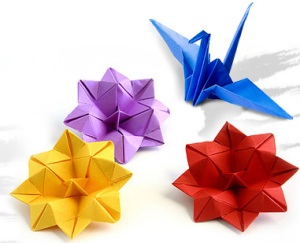

(茶道, sadō, chadō, jalan teh) adalah ritual tradisional Jepang dalam menyajikan teh untuk tamu. Pada zaman dulu disebut chatō (茶の湯, chatō?) atau cha no yu. Upacara minum teh yang diadakan di luar ruangan disebut nodate.
Teh disiapkan secara khusus oleh orang yang mendalami seni upacara minum teh dan dinikmati sekelompok tamu di ruangan khusus untuk minum teh yang disebut chashitsu. Tuan rumah juga bertanggung jawab dalam mempersiapkan situasi yang menyenangkan untuk tamu seperti memilih lukisan dinding (kakejiku), bunga (chabana), dan mangkuk keramik yang sesuai dengan musim dan status tamu yang diundang.
Teh bukan cuma dituang dengan air panas dan diminum, tapi sebagai seni dalam arti luas. Upacara minum teh mencerminkan kepribadian dan pengetahuan tuan rumah yang mencakup antara lain tujuan hidup, cara berpikir, agama, apresiasi peralatan upacara minum teh dan cara meletakkan benda seni di dalam ruangan upacara minum teh (chashitsu) dan berbagai pengetahuan seni secara umum yang bergantung pada aliran upacara minum teh yang dianut.
Seni upacara minum teh memerlukan pendalaman selama bertahun-tahun dengan penyempurnaan yang berlangsung seumur hidup. Tamu yang diundang secara formal untuk upacara minum teh juga harus mempelajari tata krama, kebiasaan, basa-basi, etiket meminum teh dan menikmati makanan kecil yang dihidangkan.
Pada umumnya, upacara minum teh menggunakan teh bubuk matcha yang dibuat dari teh hijau yang chanoyu2digiling halus. Upacara minum teh menggunakan matcha disebut matchadō, sedangkan bila menggunakan teh hijau jenis sencha disebut senchadō.
Dalam percakapan sehari-hari di Jepang, upacara minum teh cukup disebut sebagai ocha (teh). Istilah ocha no keiko bisa berarti belajar mempraktekkan tata krama penyajian teh atau belajar etiket sebagai tamu dalam upacara minum teh.

 is the traditional Japanese art of paper folding. The goal of this art is to create a representation of an object using geometric folds and crease patterns preferably without the use of gluing or cutting the paper, and using only one piece of paper.
is the traditional Japanese art of paper folding. The goal of this art is to create a representation of an object using geometric folds and crease patterns preferably without the use of gluing or cutting the paper, and using only one piece of paper.